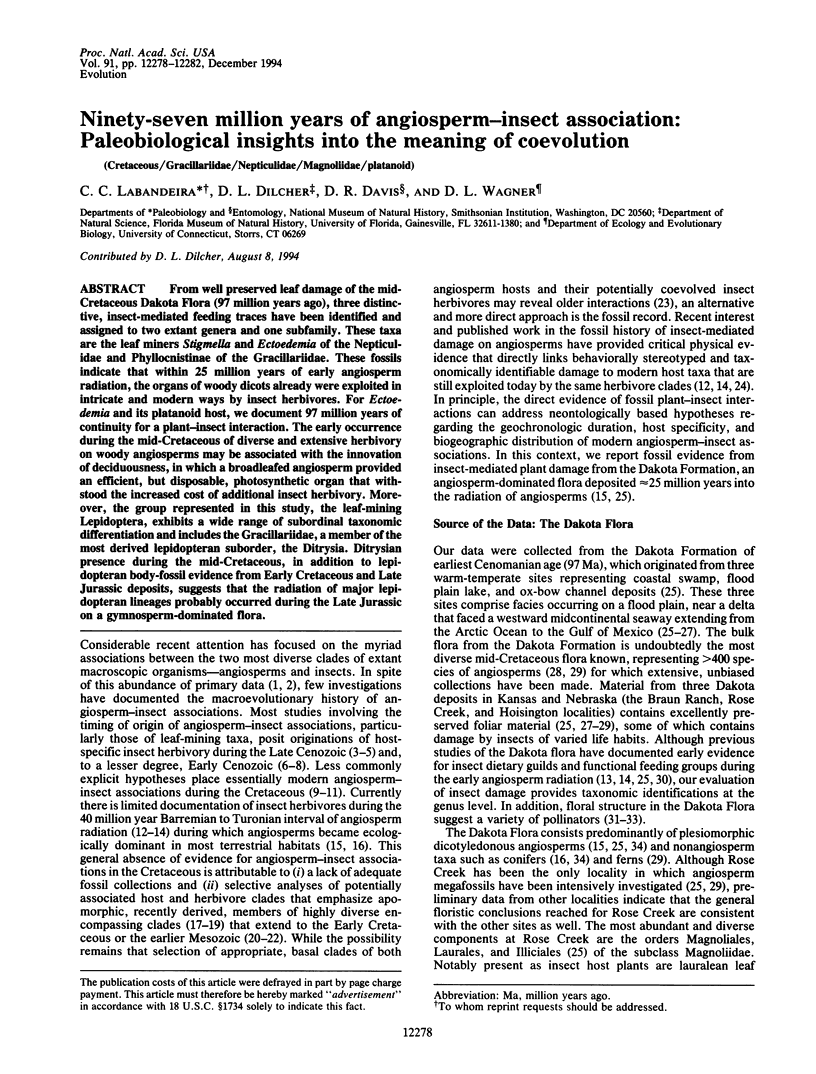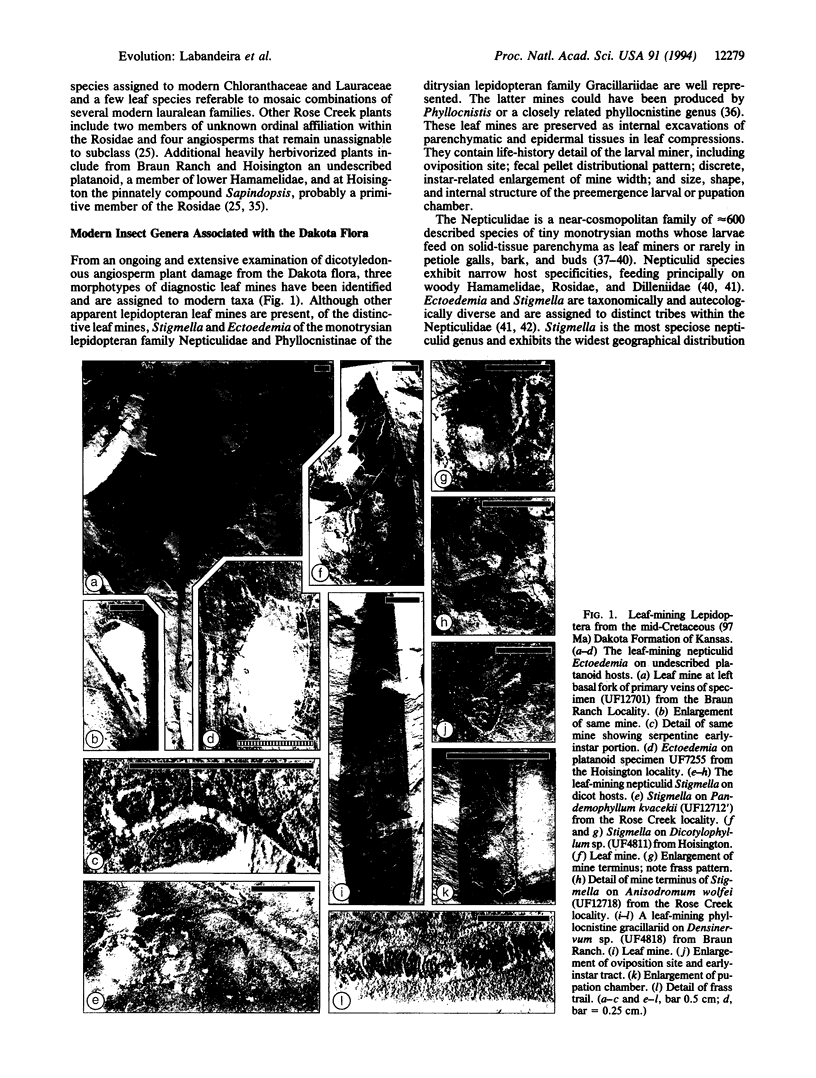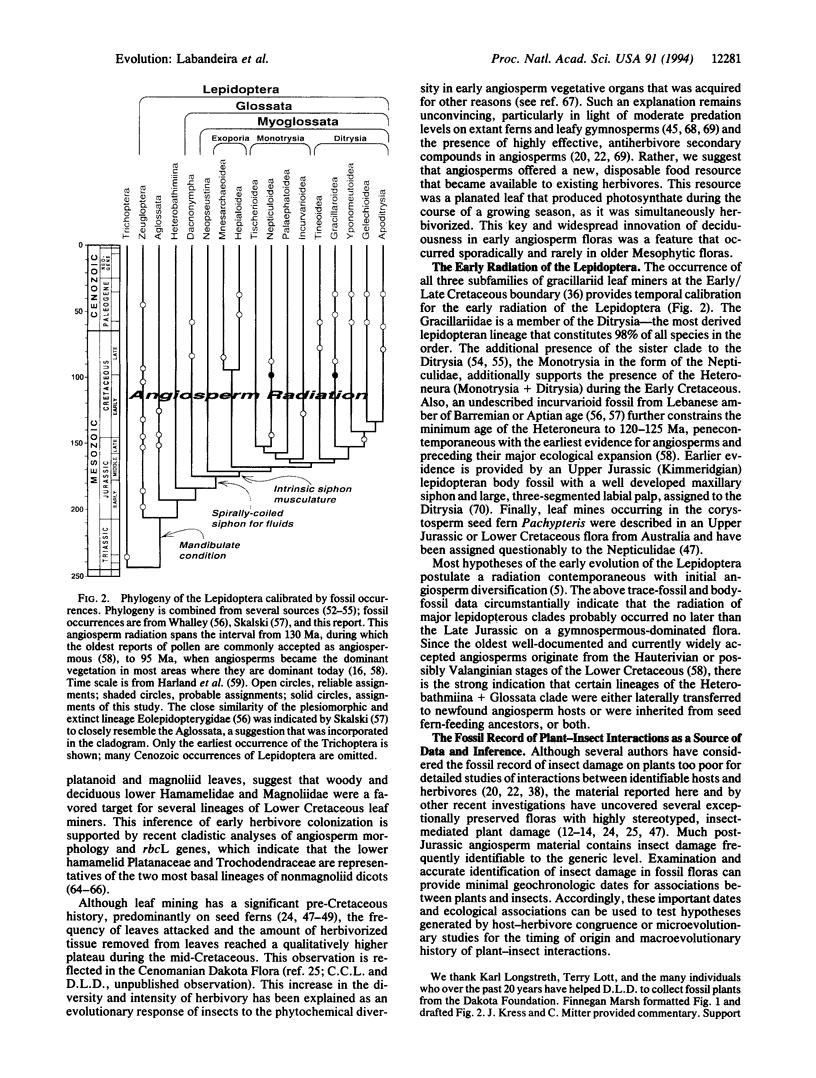Abstract
From well preserved leaf damage of the mid-Cretaceous Dakota Flora (97 million years ago), three distinctive, insect-mediated feeding traces have been identified and assigned to two extant genera and one subfamily. These taxa are the leaf miners Stigmella and Ectoedemia of the Nepticulidae and Phyllocnistinae of the Gracillariidae. These fossils indicate that within 25 million years of early angiosperm radiation, the organs of woody dicots already were exploited in intricate and modern ways by insect herbivores. For Ectoedemia and its platanoid host, we document 97 million years of continuity for a plant-insect interaction. The early occurrence during the mid-Cretaceous of diverse and extensive herbivory on woody angiosperms may be associated with the innovation of deciduousness, in which a broadleafed angiosperm provided an efficient, but disposable, photosynthetic organ that with-stood the increased cost of additional insect herbivory. Moreover, the group represented in this study, the leaf-mining Lepidoptera, exhibits a wide range of subordinal taxonomic differentiation and includes the Gracillariidae, a member of the most derived lepidopteran suborder, the Ditrysia. Ditrysian presence during the mid-Cretaceous, in addition to lepidopteran body-fossil evidence from Early Cretaceous and Late Jurassic deposits, suggests that the radiation of major lepidopteran lineages probably occurred during the Late Jurassic on a gymnosperm-dominated flora.
Full text
PDF




Images in this article
Selected References
These references are in PubMed. This may not be the complete list of references from this article.
- Basinger J. F., Dilcher D. L. Ancient bisexual flowers. Science. 1984 May 4;224(4648):511–513. doi: 10.1126/science.224.4648.511. [DOI] [PubMed] [Google Scholar]
- Hickey L. J., Hodges R. W. Lepidopteran leaf mine from the early eocene wind river formation of northwestern wyoming. Science. 1975 Aug 29;189(4204):718–720. doi: 10.1126/science.189.4204.718. [DOI] [PubMed] [Google Scholar]
- Moran N. A. A 48-million-year-old aphid--host plant association and complex life cycle: biogeographic evidence. Science. 1989 Jul 14;245(4914):173–175. doi: 10.1126/science.245.4914.173. [DOI] [PubMed] [Google Scholar]
- Opler P. A. Fossil lepidopterous leaf mines demonstrate the age of some insect-plant relationships. Science. 1973 Mar 30;179(4080):1321–1323. doi: 10.1126/science.179.4080.1321. [DOI] [PubMed] [Google Scholar]




